Sept. 17, 2024
Walnut Creek, CA, United States
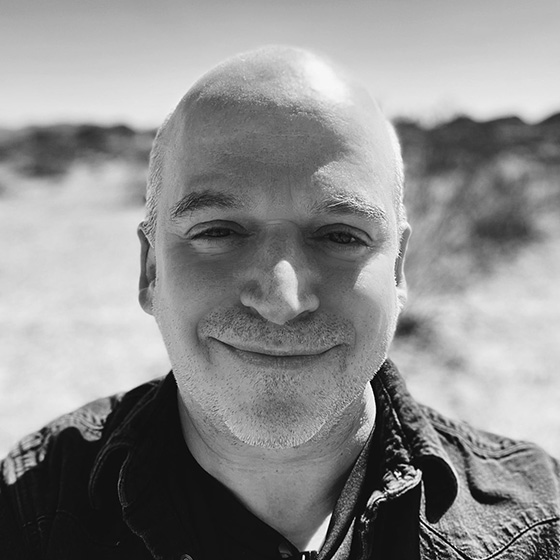
Sept. 17, 2024
Walnut Creek, CA, United States
Arlan Smith’s approach to art is rooted in curiosity and a willingness to challenge conventions. As someone who embraces new tools like AI with an open mind, he sees Midjourney not as a replacement for artistic vision, but as a way to ask more interesting questions. His work reflects a personal pursuit of texture, depth, and meaning, while quietly pushing back against the notion that art must fit neatly into predefined categories. In this conversation, Arlan offers his perspective on AI-generated art, its critics, and how he maintains a sense of individuality in a space that’s still being defined.
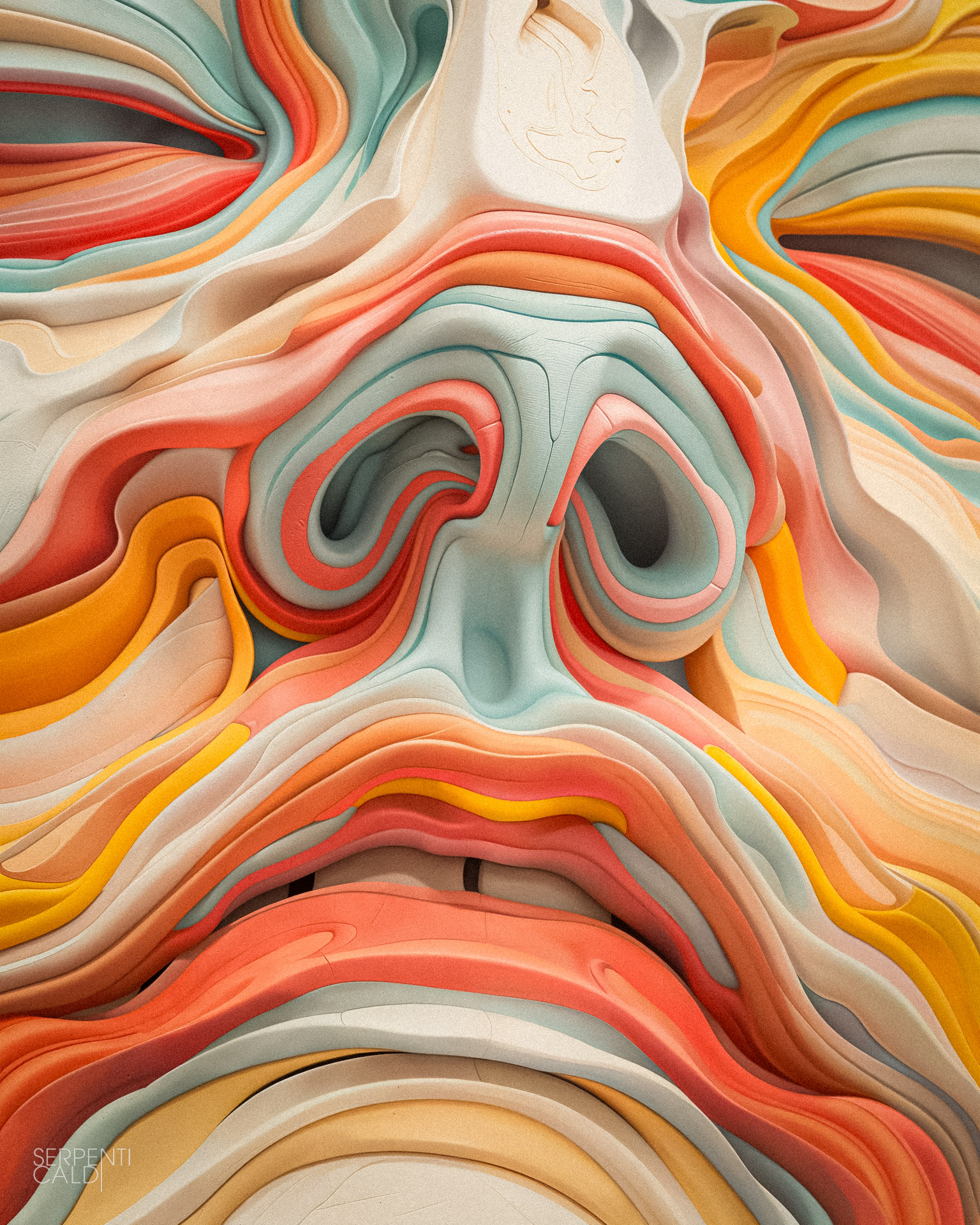
Abstractions
I rely heavily on texture and depth to give my work a sense of uniqueness.
In the Spring of 2021, I began to see people on LinkedIn posting work from this new AI image generation tool called MidJourney. At first, I was skeptical, the results looked rough, but my curiosity was piqued, so I signed up for the beta trial. Once my account came through, I gave it a spin, and I was hooked immediately.
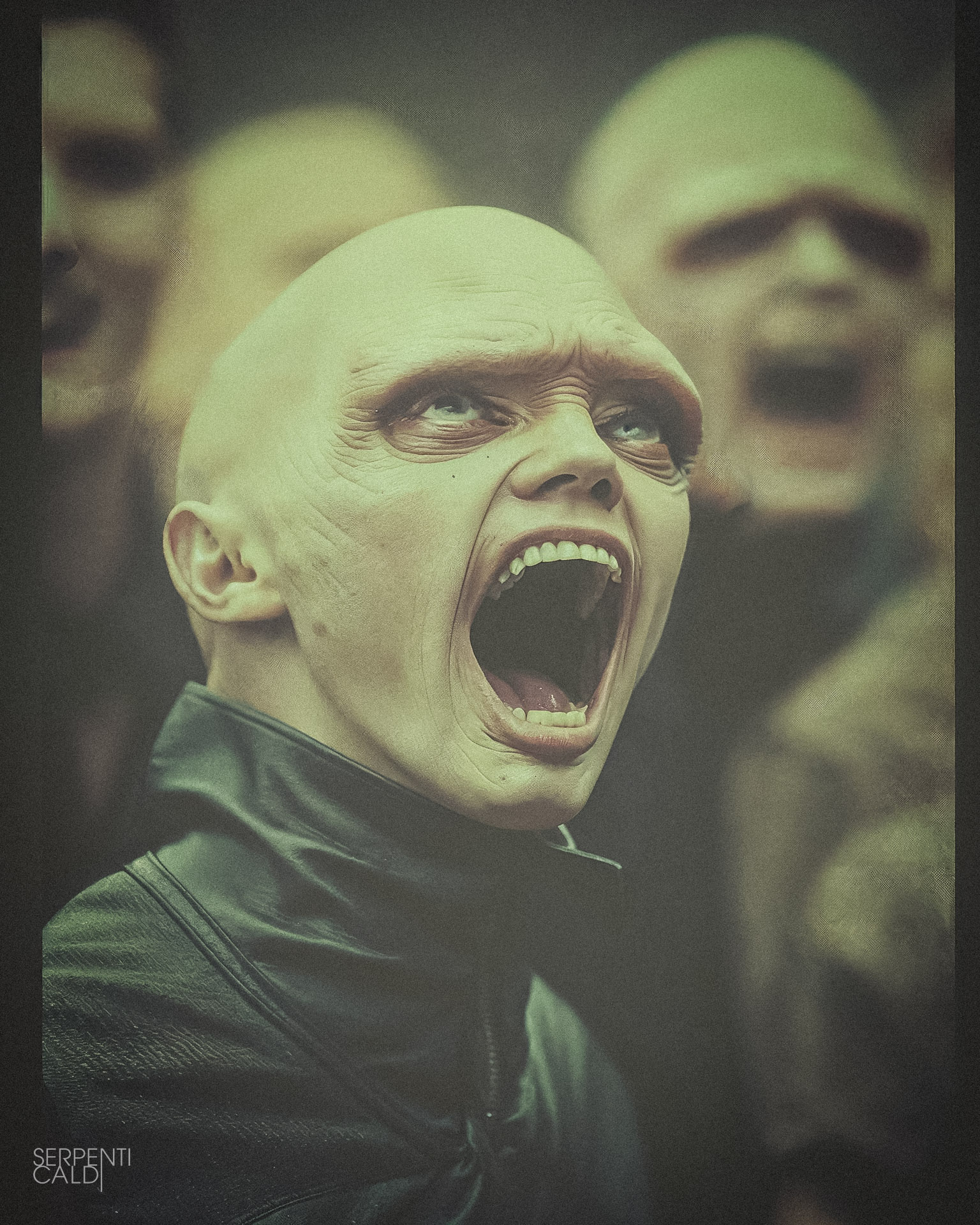
Cenobites Laughing
99% of all art is derivative, uninspired, and safe. AI just puts a spotlight on that reality.
My deep background is in generative art, mostly experimental music and video. That means things like modular analog synthesis or software platforms like Max. My art school had an analog video synthesizer, which I used to play around with.
Generative art, for those who aren't familiar with it, is a form of process art in which a system, usually computational, is used to drive various functions that produce an output. The output tends to be ephemeral and will often incorporate randomized or chaotic elements. In short, the process drives the output. Often, the process is the goal, and the output is secondary.
If you're curious about some pioneering generative artists, here are a few people to look up: John Whitney, Vera Molnar, Brian Eno, Alvin Lucier, and Joshua Davis.
My personal artistic influences are fairly broad and really cover the whole of art history. So, Caravaggio, Vermeer, Goya, Bach, Mozart, Duchamp, Warhol, Koons. But also street art, graffiti, graphic design, film, photography, and so on.
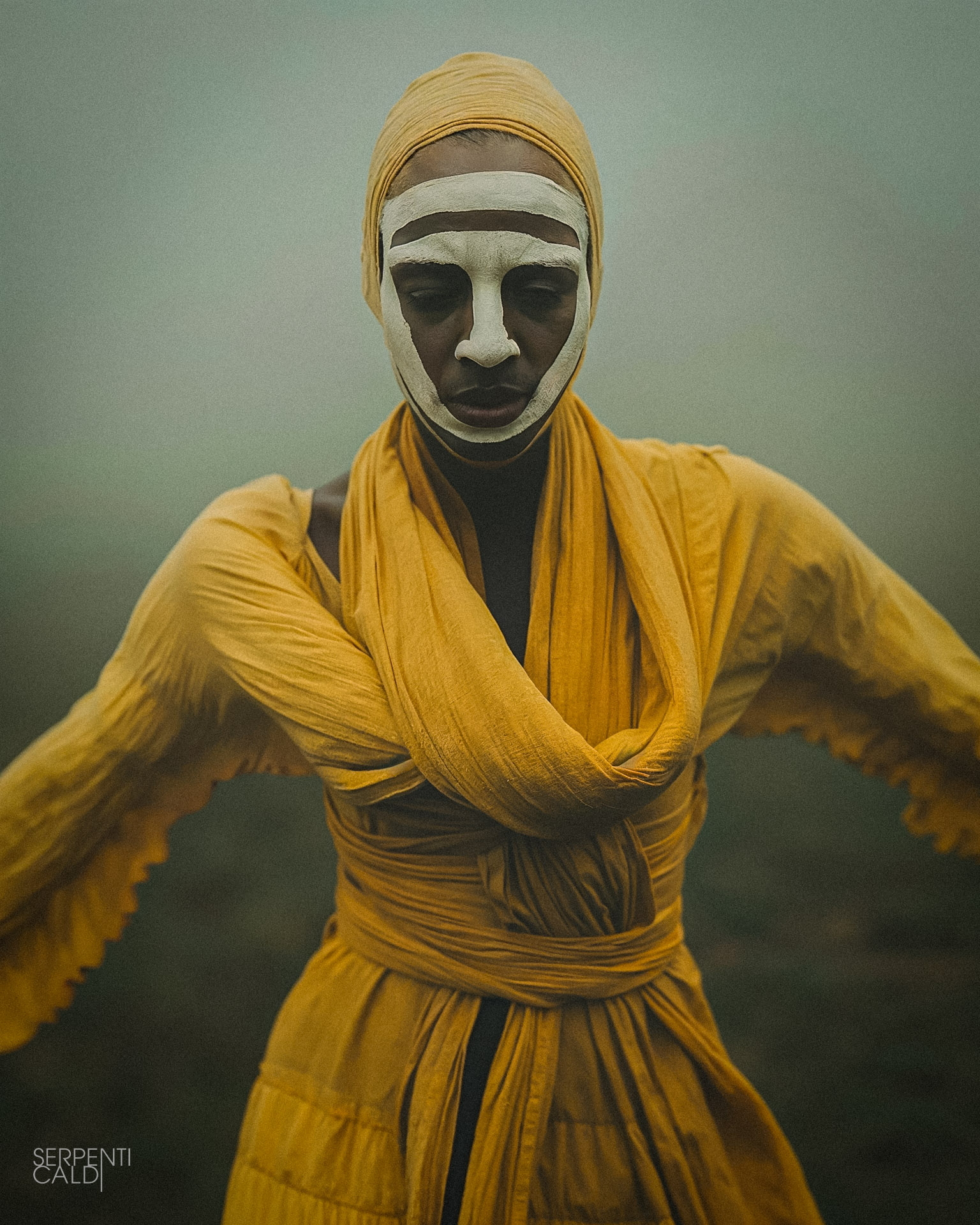
Fighting Monks
I don't know that the role of the artist changes all that much. What changes are the tools.
I have three main input workflows I use regularly. However, my output process is uniform across the board.
Once I have results I'm happy with, I run everything through Magnific, which is a fairly aggressive generative upscaler, or Topaz. Then it all goes through Lightroom or Photoshop for color correction and retouching.
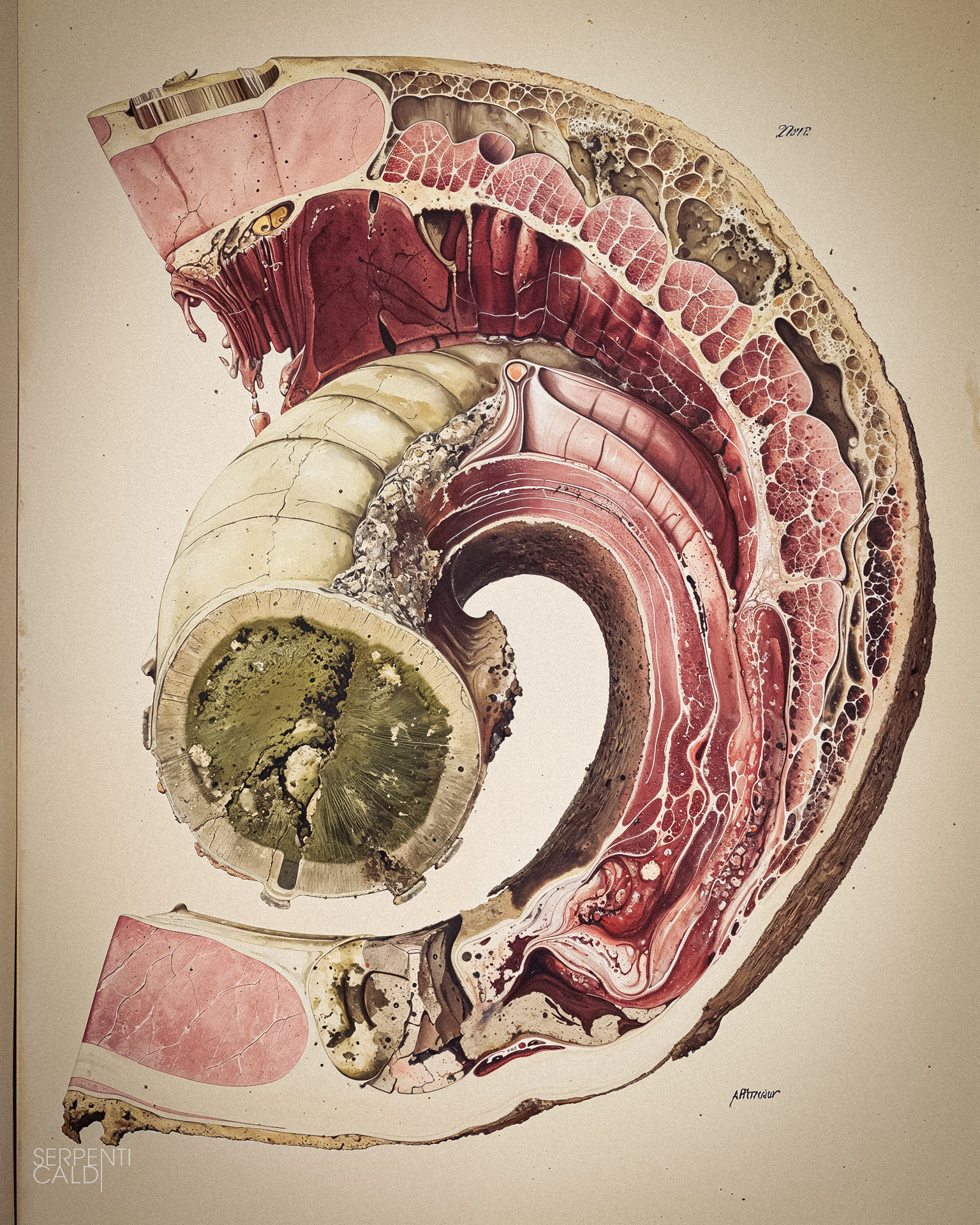
Medical Diagrams
Midjourney will give you what you ask for, so you better make sure you’re asking interesting questions.
As I outlined above, I have several different approaches, and I use them to achieve different results.
For straight prompting, I just work at a prompt until I get what I want. These outputs tend to be more literal and less abstract. For example, I have a series I do based on imaginary sports cars from the early 1970s. I blend characteristics from various vintage vehicles and modify them with specific photographic techniques.
When I'm using /describe, it's usually because I'm trying to get a quick result, and I need to mine the correct prompting language to do so.
With recursive generation, it's almost entirely unguided. I might modify a word here and there, but I really want to retain the randomness of the result.
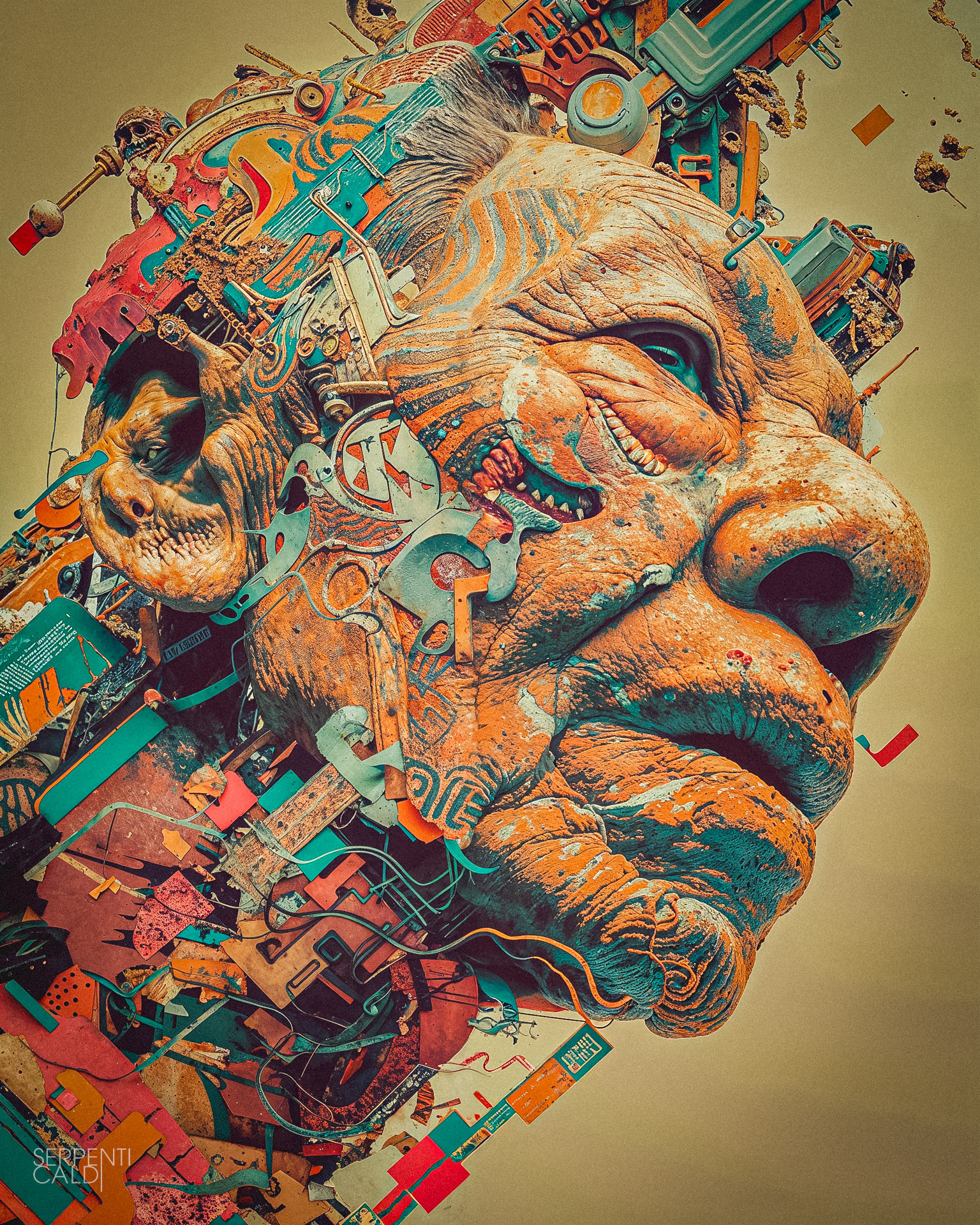
Psychedelia
Don’t be afraid to get weird. Midjourney will follow your lead, and the stranger the path, the more interesting the result.
I gravitate towards surrealism, satire, and storytelling. I incorporate influences from vintage film and fashion, graphic design, poster and album art, science fiction, and psychedelia.
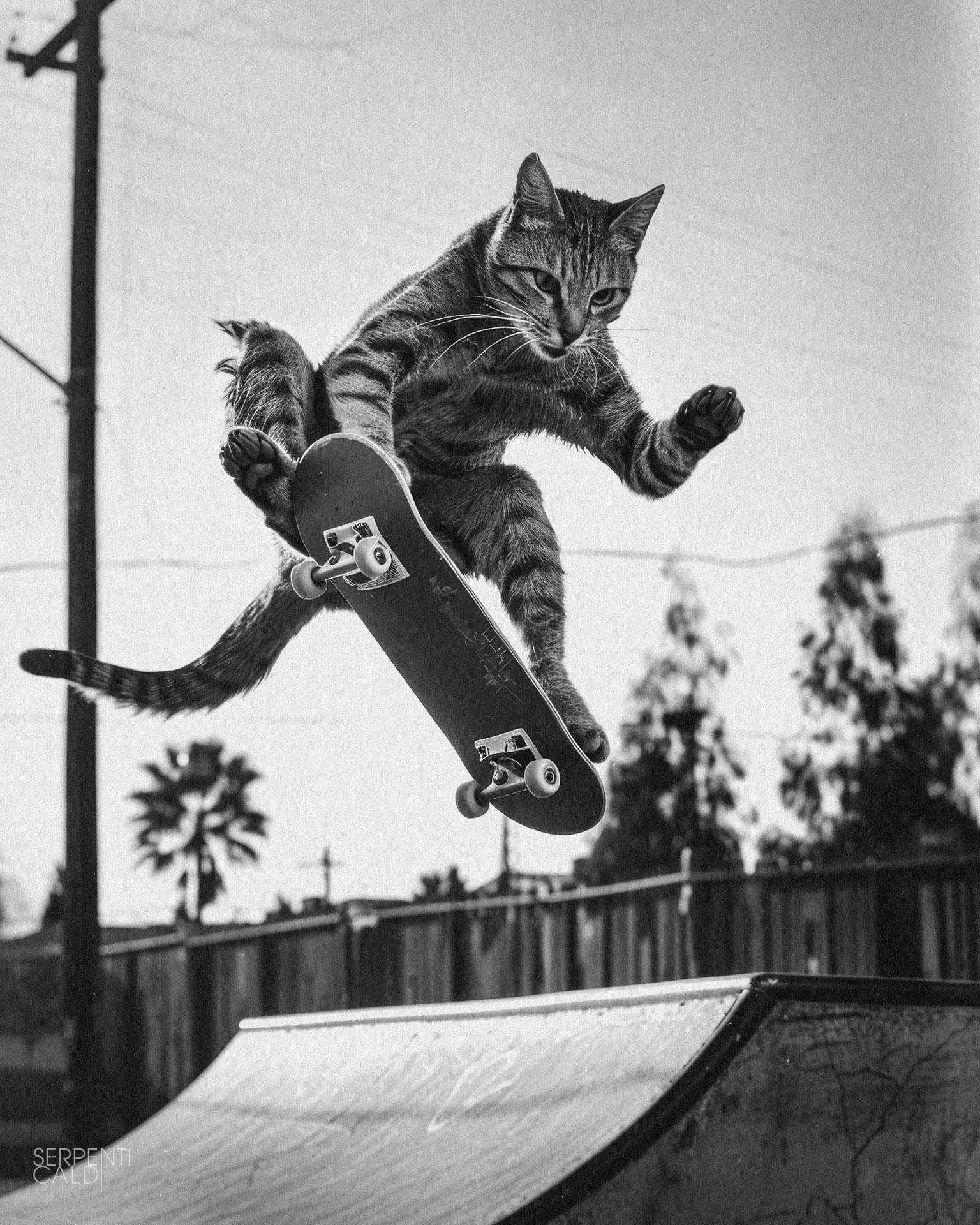
Skatecats
I’m more of a solo experimenter, testing the limits of what these tools can do.
It's all over the map, but I tend to gravitate to fashion, classic film, and graphic design.
Depending on what my goal is at any given time, the randomness is really the point of it for me. Happy accidents are a huge part of most artists’ processes, so you just need to be open to unpredictable results.
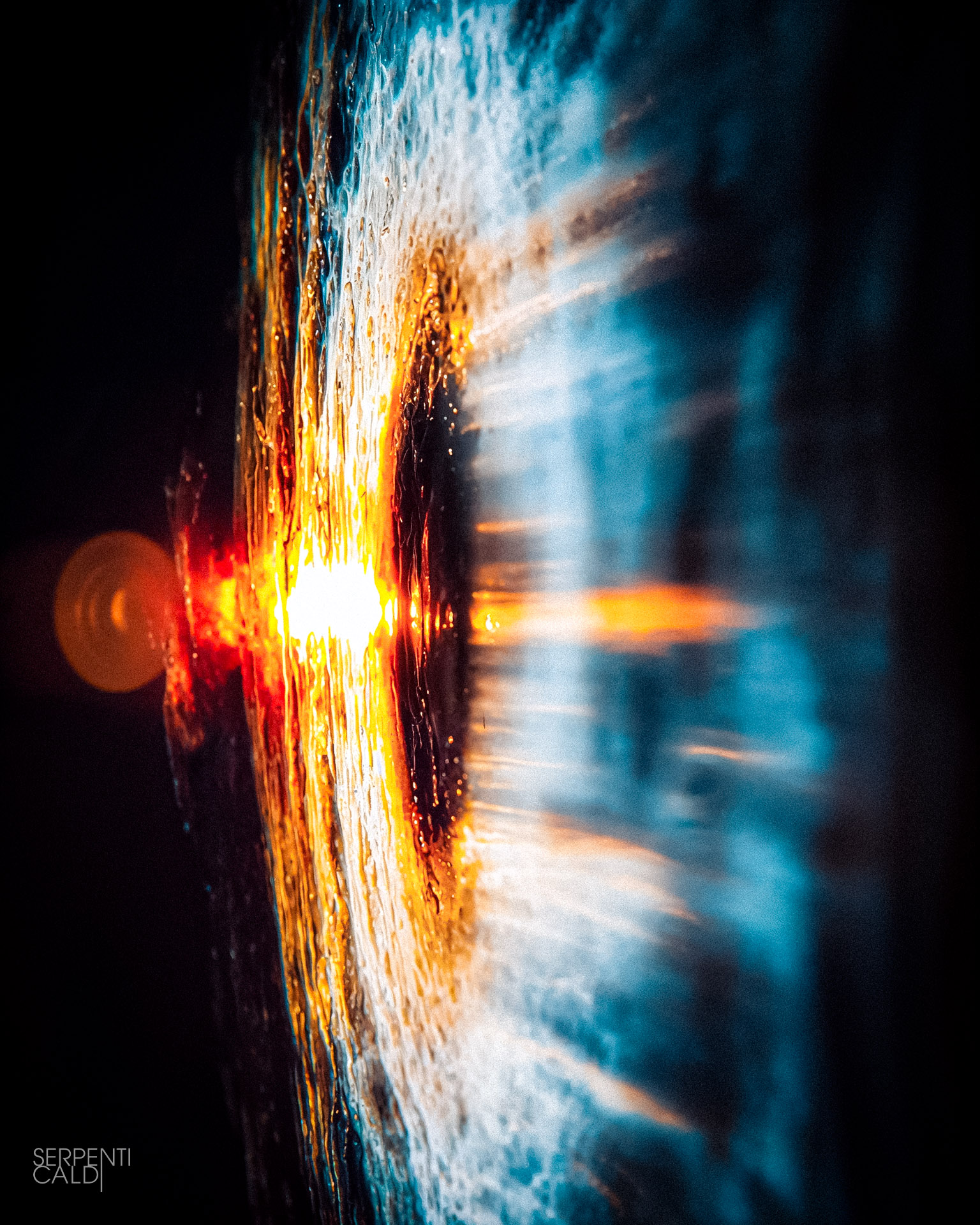
Slitscan
I’m especially interested in slit-scan techniques because they bend the perception of time and space in a way that’s visually striking.
Precise aspect ratio controls. MJ is fairly unique in this capability and it brings you much closer to professional quality output. Different aspect ratios create fundamentally different results, and MJ really works in this regard.
Not so much a tip as a specific approach. MJ rewards granularity. Be specific in terms of describing what you want. I have deep knowledge of art history and technique, ranging from painting and drawing to film and video, music, CGI, visual effects, and so on. So, if you're trying to achieve a specific result, do some research. Try to learn more about the artists you're trying to emulate. Gain an understanding of specific techniques. The more precisely you can describe what you want, the better your results will be.
I have a fairly uniform post-process. MJ → Magnific/Topaz → Lightroom/Photoshop.
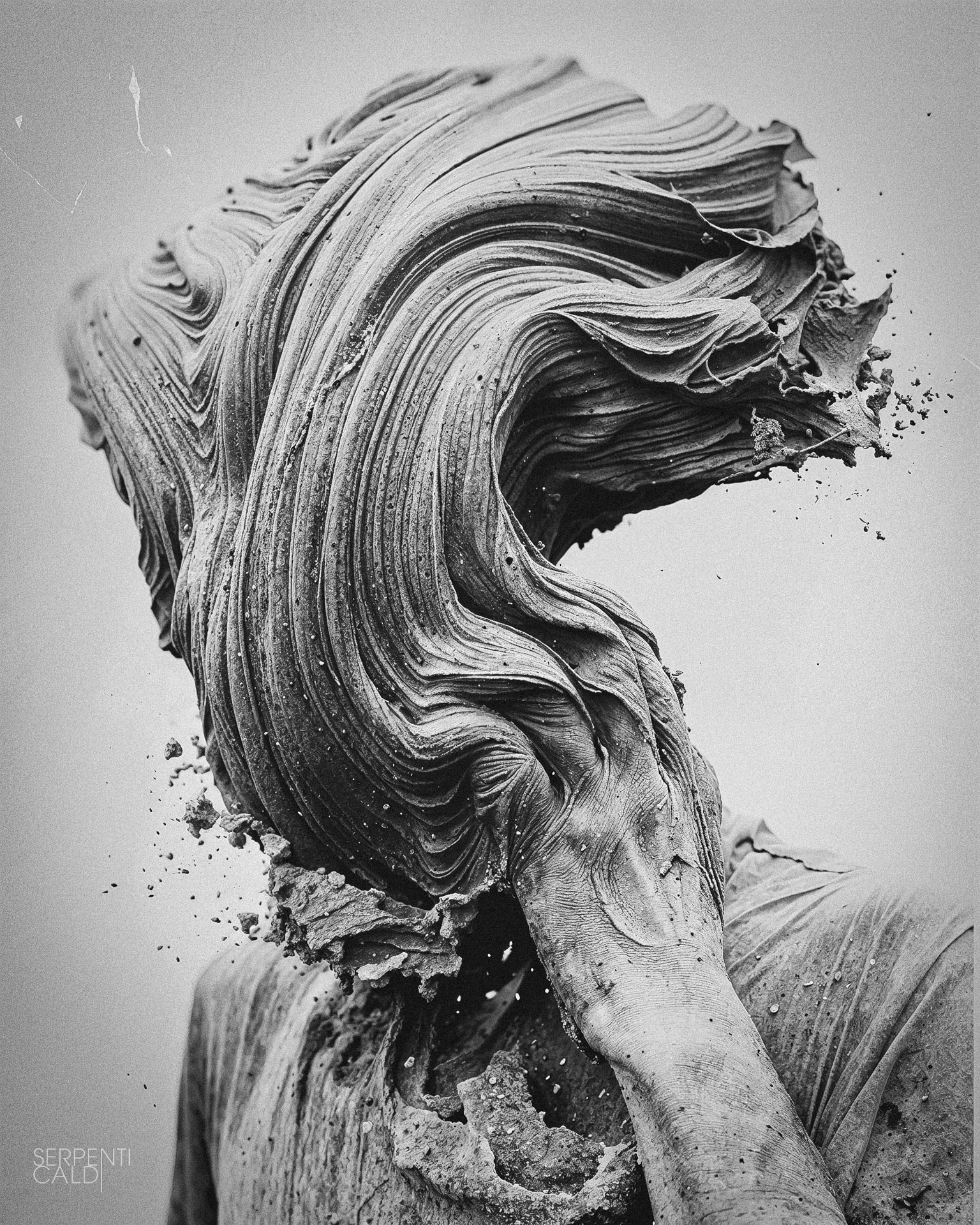
Swirly
Midjourney has fundamentally altered my approach to ideation. It’s a part of my everyday process, and I spend a significant part of every day working on it. Clients have been a little slow to adopt it, which I understand, but in the last few months, I've been getting a lot of requests that explicitly involve using the technology.
Right now, AI video. I've been running a ton of experiments in Runway and Luma. Beyond that, I want to see this tech find its way to more specific visual effects applications, like 3-D modeling, rotoscoping, rendering, and in-betweening.
The barrier to entry is about to drop through the floor for individual artists who want to tell their own stories, and that's amazing.
I have some Pixel Art experiments coming up, and I’m also trying to reverse engineer some old-school optical effects in the style of the slit-scan effects from the end of 2001: A Space Odyssey.
My stock images are starting to get some traction, so I'm spending time generating images for that.
Beyond that, I’m developing narrative content with some forward-thinking partners. I can’t say any more on that subject. Stay tuned.
I don’t know that the role of the artist changes that much. I’m able to create this work precisely because I have many decades of training and hands-on experience.
I think people are afraid that craft and hand skills will wither because you can access any style instantly, and that’s just not so.
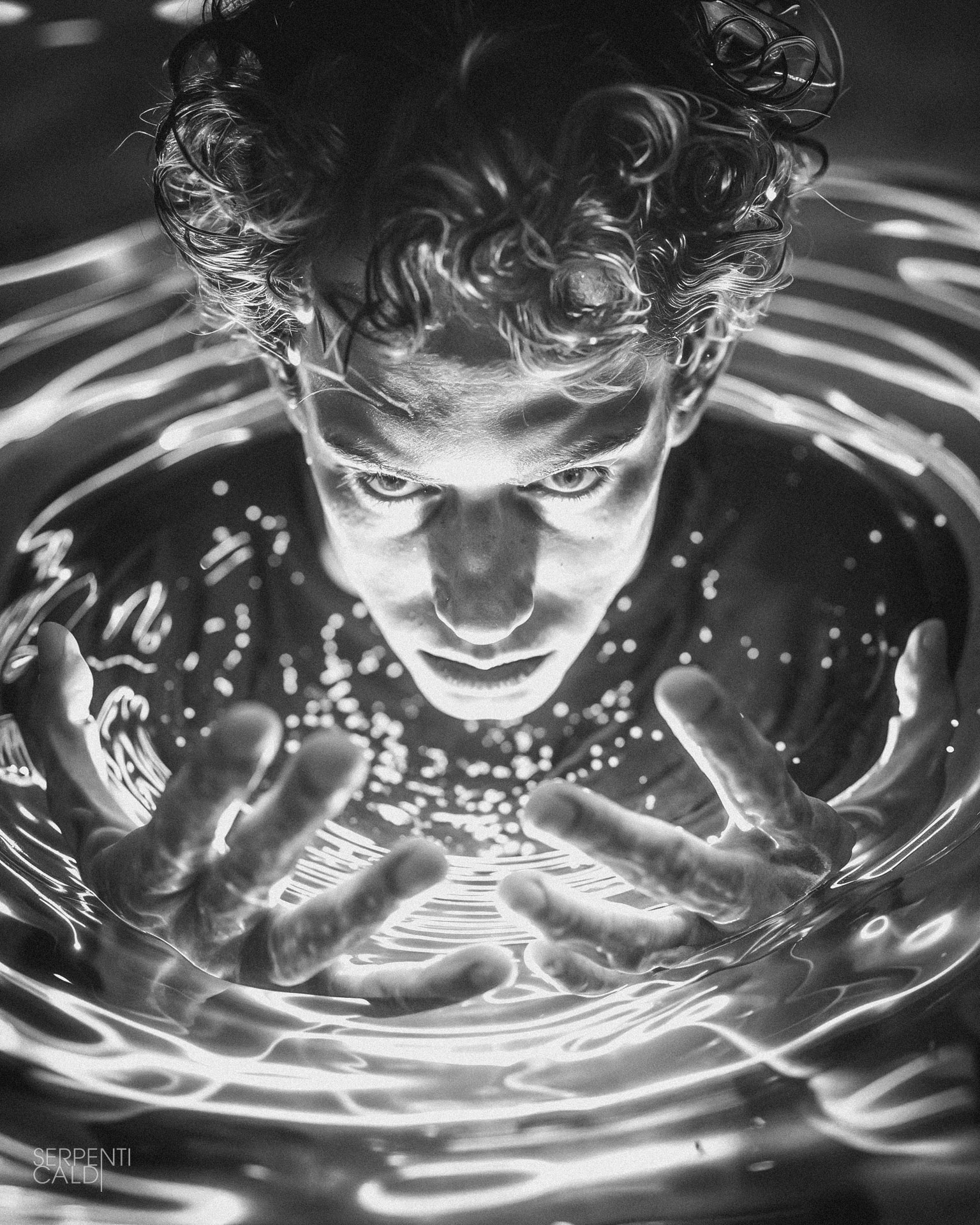
Telekinesis
99% of all art is derivative, uninspired, and unmemorable. It’s always been this way. So, 99% of AI-art is the same. It's the 1% you want to seek out. For me, the most successful AI-generated work embraces the imperfections of the medium, which means leaning into the weird, surreal, and random.
I’ve found that over time the work has become “mine”. It reflects my own subject matter and visual style preferences very closely. In short, it looks like something I would create using other techniques. Part of that is process, but there’s something else going that’s more intangible, more mysterious.
Pixel_Art
Don’t be afraid to get weird. Midjourney will create an image from any input, so just start throwing things into it and see what comes out.